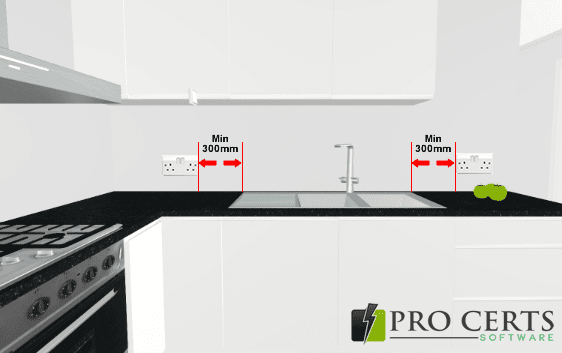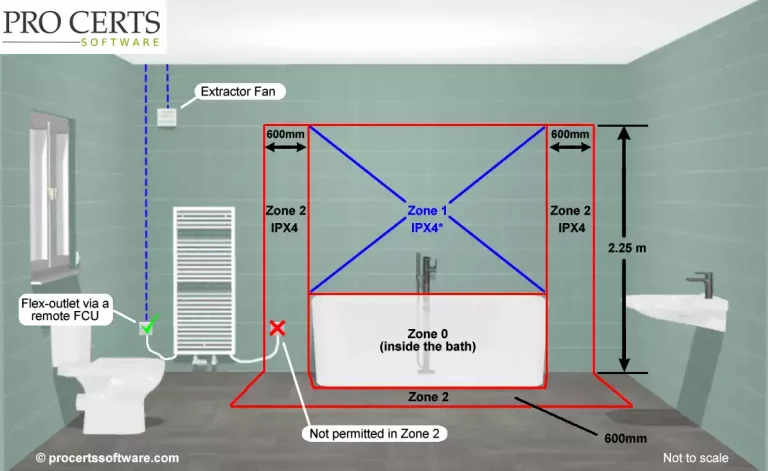Resistor Colour Codes
A complete guide to resistor colour codes, calculating colour code resistance values and what each colour band means.
To calculate the resistance value of a resistor we need to know what each of the coloured bands around the resistor represents. Resistors will have either 4, 5 or 6 bands, each coloured band represents a different value as shown in the table below.
| Table of Resistor Bands | ||||
|---|---|---|---|---|
| 4 Band Resistor | 5 Band Resistor | 6 Band Resistor | ||
| 1st band | 1st Digit | 1st Digit | 1st Digit | |
| 2nd band | 2nd Digit | 2nd Digit | 2nd Digit | |
| 3rd band | Multiplier | 3rd Digit | 3rd Digit | |
| 4th band | Tolerance | Multiplier | Multiplier | |
| 5th band | Tolerance | Tolerance | ||
| 6th band | Temperature Coefficient | |||
Resistor Colour Codes Table
| Table of Resistor Colour Codes | ||||
|---|---|---|---|---|
| Color | Inital Digits | Multiplier | Tolerance | Temperature Coefficient |
| Black | 0 | x1 | 250 ppm/°C | |
| Brown | 1 | x10 | ±1% | 100 ppm/°C |
| Red | 2 | x100 | ±2% | 50 ppm/°C |
| Orange | 3 | x1000 (1k) | ±0.05% | 15 ppm/°C |
| Yellow | 4 | x10,000 (10k) | ±0.02% | 25 ppm/°C |
| Green | 5 | x100,000 (100k) | ±0.5% | 20 ppm/°C |
| Blue | 6 | x1,000,000 (1M) | ±0.25% | 10 ppm/°C |
| Violet | 7 | x10,000,000 (10M) | ±0.1% | 5 ppm/°C |
| Grey | 8 | x100,000,000 (100M) | ±0.01% | 1 ppm/°C |
| White | 9 | x10B | ||
| Gold | x0.1 | ±5% | ||
| Silver | x0.01 | ±10% | ||
| Pink | x0.001 | |||
Resistor Initial Digits
The resistor coloured bands for determining the initial digit values needed to calculate a resistor resistance value are Bands 1 and 2 for four band resistors, Bands 1, 2 and 3 for five and six band resistors and can to be determined by looking at the Table of Resistor Color Codes above.
These initial digits are not added together but placed side by side to result in a full number, for example if Band 1 colour is Green, value of green is “5”, if the 2nd Band colour is brown, the value of brown is “2”, therefore the full number is “52”.
Using the above example, the resistance calculation would be 52 x Multiplier = Resistor Resistance.
Resistor Multiplier
For resistor multipliers, if you can memorise the resistor colours and their associated inital digit numbers from 0 to 6, then an easy way to remember the multiplier value is that the initial digit number is the amount of zeros for the multiplier number.
For example, if a resistor band 1 colour is green the associated number is 5, therefor the multiplier value is 100,000 (5 zeros), or 10⁵.
Resistor Tolerance
A resistor tolerance determines the accuracy of the resistor resistance value, for example if a resistor resistance is identified to be 150Ω and the tolerance value is ±2%, this means the “actual” resistance of the resistor could be +2% or -2% of the initial value of 150Ω.
To calculate the resistance range with a tolerance of ±2%, the calculation is 150Ω x 0.02 = 3Ω, therefore the resistor resistance range is plus or minus 3Ω, which equates to 147Ω to 153Ω for this example.
4 Band Resistor Colour Codes
Resistors with 4 coloured bands, the 1st band is the first digit, the 2nd band is the second digit, the 3rd band is the Multiplier and the 4th band is the Tolerance range.

- Band 1 = 1st digit
- Band 2 = 2nd digit
- Band 3 = Multiplier
- Band 4 = Tolerance
4 Band Resistor Calculation Example
- Band 1: 1st digit, Brown = 1.
- Band 2: 2nd digit, Red = 2.
- Band 3: Multiplier, Green = x 100k (100,000).
- Band 4: Tolerance, Gold = ±5%.
4 Band Calculation: 12 x 100,000 = 1,200,000Ω (1.2 MΩ) with a tolerance of ±5%
4 Band Resistor Calculation Formula
(Band 1, Band 2) x Band 3 = Ω
5 Band Resistor Colour Codes
Resistors with 5 coloured bands, the 1st band is the first digit, the 2nd band is the second digit, the 3rd band is the third digit, the 4th band is the Multiplier and the 5th band is the Tolerance range.

- Band 1 = 1st digit
- Band 2 = 2nd digit
- Band 3 = 3rd digit
- Band 4 = Multiplier
- Band 5 = Tolerance
Calculating the resistance of a 5 band resistor is much the same as for the 4 band resistor but with 3 initial digits rather than 2.
5 Band Resistor Calculation Example
- Band 1: 1st digit, Red = 2.
- Band 2: 2nd digit, Yellow = 4.
- Band 3: 3rd digit, Black = 0.
- Band 4: Multiplier, Brown = 10
- Band 5: Tolerance, Brown = ±1%.
5 Band Calculation: 240 x 10 = 2,400Ω (2.4 kΩ) with a tolerance of ±1%.
5 Band Resistor Calculation Formula:
(Band 1, Band 2, Band 3) x Band 4 = Ω.
6 Band Resistor Colour Codes
Resistors with 6 bands, the 1st band is the first digit, the 2nd band is the second digit, the 3rd band is the third digit, the 4th band is the Multiplier, the 5th band is the Tolerance range and the 6th band is the Temperature Coefficient value.

- Band 1 = 1st digit
- Band 2 = 2nd digit
- Band 3 = 3rd digit
- Band 4 = Multiplier
- Band 5 = Tolerance
- Band 6 = Temperature coefficient
For calculating the resistance of a 6 band resistor is the same as for calculating for the 5 band resistor, the only difference being the 6 band resistor has a specified temperature coefficient rating stated in ppm/ºC (parts per million per degree Centigrade).
The Temperature Coefficient of Resistance (TCR) of resistors is expressed in ppm/ºC, this means how much a resistors resistance value changes as its temperature changes.
6 Band Resistor Calculation Example:
- Band 1: 1st digit = Red (2).
- Band 2: 2nd digit = Yellow (4).
- Band 3: 3rd digit = Black (0).
- Band 4: Multiplier = Brown (10).
- Band 5: Tolerance = Brown (±1%).
- Band 6: Temperature Coefficient = Red (50).
6 Band Calculation: 240 x 10 = 2,400Ω (2.4 kΩ) with a tolerance of ±1%. and 50 ppm/ºC.
6 Band Resistor Calculation Formula:
(Band 1, Band 2, Band 3) x Band 4 = Ω






